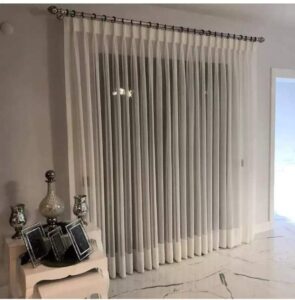Ceilings are often an overlooked element in interior design, but they play a crucial role in shaping the overall look and feel of a space. From traditional flat ceilings to more elaborate designs, there are numerous options to consider when it comes to ceiling design. Here’s a rundown of different types of ceilings and their characteristics:
1. *Flat Ceilings*: Flat ceilings are the most common type and are characterized by their smooth, uninterrupted surface. They provide a clean and simple aesthetic, making them suitable for a wide range of architectural styles. Flat ceilings can be painted in a variety of colors to complement the overall décor of the room.
2. *Tray Ceilings*: Tray ceilings feature a recessed center section that is higher than the surrounding perimeter, creating a multi-dimensional look. This design adds visual interest and depth to a room and can be accentuated with crown molding or indirect lighting for added drama.
3. *Coffered Ceilings*: Coffered ceilings are characterized by a series of recessed panels or beams that create a grid-like pattern on the ceiling surface. This architectural detail adds sophistication and elegance to a space and can be customized with different panel sizes, shapes, and finishes to suit the overall design aesthetic.
4. *Vaulted Ceilings*: Vaulted ceilings are characterized by their steeply angled slopes that follow the shape of the roofline. This design feature creates a sense of spaciousness and grandeur, making it ideal for rooms with high ceilings or loft-style living spaces. Vaulted ceilings can be left exposed for a rustic look or finished with decorative beams for added visual interest.
5. *Cathedral Ceilings*: Cathedral ceilings are a specific type of vaulted ceiling characterized by their symmetrical slopes that meet at a central peak. This design is often found in churches and cathedrals but can also be incorporated into residential architecture to create a dramatic and awe-inspiring focal point in a room.
6. *Beam Ceilings*: Beam ceilings feature exposed structural beams that add rustic charm and architectural interest to a space. Whether made of wood, metal, or faux materials, beams can be installed in various configurations, such as parallel lines or crisscross patterns, to create a unique and visually striking ceiling design.
7. *Tongue and Groove Ceilings*: Tongue and groove ceilings feature interlocking boards that are installed with a slight overlap, creating a seamless and cohesive surface. This design is often used in traditional and farmhouse-style homes to add texture and warmth to a room. Tongue and groove ceilings can be left natural or painted to match the surrounding décor.
8. *Plank Ceilings*: Plank ceilings consist of individual planks of wood or engineered materials that are installed side by side to create a linear or geometric pattern. This design adds a touch of rustic charm and architectural detail to a space and can be stained or painted to achieve a desired look.
9. *Suspended Ceilings*: Suspended ceilings, also known as drop ceilings, consist of a grid framework that supports ceiling tiles or panels. This type of ceiling is often used in commercial spaces or basements to conceal ductwork, wiring, and plumbing while providing easy access for maintenance.
10. *Acoustic Ceilings*: Acoustic ceilings, also known as soundproof ceilings or acoustic panels, are designed to absorb sound and reduce noise levels within a room. These ceilings are often used in theaters, recording studios, and office spaces to improve acoustics and create a more comfortable environment for occupants.
When choosing a ceiling design for your space, consider factors such as architectural style, ceiling height, room size, and overall design aesthetic. Whether you prefer the classic simplicity of a flat ceiling or the dramatic impact of a vaulted or coffered ceiling, there’s a ceiling design to suit every taste and budget.





Integer nec odio. Praesent libero. Sed cursus ante dapibus diam. Sed nisi. Nulla quis sem at nibh elementum imperdiet. Duis sagittis ipsum.